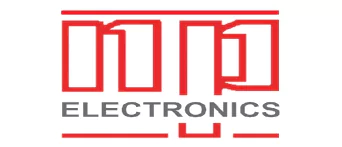Understanding AIS-119 (Sleeper Coaches) & AIS-139 Amendment 1 (Double-Deck Buses): A Complete Compliance Guide
Automotive Industry Standards & Compliance
India’s automotive safety standards, governed by the Automotive Industry Standards (AIS), ensure that commercial vehicles like sleeper coaches (AIS-119) and double-deck buses (AIS-139 Amendment 1) meet stringent safety, structural, and operational norms.
Automotive industry standards serve as the foundation for vehicle safety, performance, and regulatory compliance across global markets. These automotive industry standards, including AIS (India), ECE (Europe), and FMVSS (USA), establish critical requirements for crashworthiness, emissions control, and electrical systems. Manufacturers must comply with these automotive industry standards through rigorous testing at accredited facilities to ensure product quality and consumer safety. As automotive industry standards continue to evolve with new technologies, maintaining compliance has become more complex yet increasingly vital for market access and competitive advantage.
For manufacturers, transport operators, and regulatory bodies, understanding these standards is crucial for certification, homologation, and compliance. This blog provides a detailed comparison of:
- AIS-119 Requirements for Sleeper Coaches
- AIS-139 Amendment 1 for Double-Deck Buses
- Key Differences & Compliance Challenges
- Certification Process & Testing Requirements
By the end, you’ll know how to navigate homologation for both vehicle types efficiently.
1. AIS-119: Requirements for Sleeper Coaches
What is AIS-119?
AIS-119 outlines safety and construction standards for sleeper coaches (buses with sleeping berths) in India. It ensures passenger safety, fire resistance, and structural integrity.
Key Requirements
- Structural Safety
- Rollover Protection (ROPS): Must withstand a rollover test per IS 14225.
- Seat & Berth Strength: Minimum anchorage strength of 980 N per seat.
- Fire Safety: Flame-retardant materials (IS 15061) and fire extinguishers mandatory.
- Comfort & Ergonomics
- Minimum berth dimensions: 1,800 mm (length) × 500 mm (width).
- Aisle width: At least 300 mm for passenger movement.
- Testing & Certification
- ICAT (International Centre for Automotive Technology) conducts crash, fatigue, and fire tests.
- BIS (Bureau of Indian Standards) certification required.
- Common Challenges:
- Meeting berth durability tests.
- Ensuring fireproof materials at cost-effective rates.
2. AIS-139 Amendment 1: Requirements for Double-Deck Buses
What is AIS-139 Amendment 1?
This amendment updates safety norms for double-deck buses, focusing on height, stability, and emergency exits.
Key Requirements
- Vehicle Dimensions & Stability
- Max height: 4.2 meters (revised from earlier limits).
- Center of Gravity (CoG) test: Must pass tilt-table test (28° side tilt).
- Safety & Emergency Features
- Emergency exits: Minimum two roof hatches + side windows for evacuation.
- Staircase design: Non-slip steps, handrails, and minimum width of 450 mm.
- Testing & Certification
- Rollover test (ECE R66 equivalent) mandatory.
- ICAT or ARAI conducts stability and braking tests.
- Common Challenges:
- Height restrictions impacting bus design.
- Structural reinforcements increasing manufacturing costs.
3. Key Differences Between AIS-119 & AIS-139 Amendment 1
| Parameter | AIS-119 (Sleeper Coaches) | AIS-139 Amendment 1 (Double-Deck Buses) |
|---|---|---|
| Primary Focus | Sleeping berth safety | Height, stability, passenger capacity |
| Rollover Test | IS 14225 (Static load test) | Dynamic rollover (ECE R66 equivalent) |
| Fire Safety | IS 15061 (Flame retardant) | Less emphasis (focus on escape routes) |
| Max Height | Not applicable (single deck) | 4.2 meters (strictly enforced) |
| Certification Body | BIS + ICAT | ARAI / ICAT |
4. Certification Process for Both Standards
Step-by-Step Approval Workflow
- Design Submission – Submit technical drawings to ICAT/ARAI.
- Prototype Testing – Rollover, fire, and braking tests.
- Documentation – Submit test reports to MoRTH (Ministry of Road Transport).
- Final Approval – Receive Homologation Certificate (CMVR).
Timeframe:
- AIS-119: ~3-4 months (due to fire & fatigue tests).
- AIS-139: ~4-6 months (stability tests are complex).
5. Future Trends & Updates
- AIS-119: Expected to align closer with UNECE R107 (EU sleeper bus norms).
- AIS-139: Possible height relaxation for electric double-deckers.
Conclusion: Which Standard is Tougher?
- AIS-119 focuses on fire safety & berth durability.
- AIS-139 Amendment 1 emphasizes stability & height compliance.
Need Help with Certification?
Consult homologation experts to streamline approvals for sleeper coaches & double-deck buses!
NP Electronic’s Automotive Industry Standards & Compliance
NP Electronic provides comprehensive solutions for automotive industry standards compliance, helping manufacturers navigate the certification process efficiently. Our expertise covers all major automotive industry standards, from AIS and ECE to FMVSS, offering end-to-end support including testing coordination, technical documentation, and regulatory consulting. Whether you’re certifying conventional vehicles or advanced EV systems, our team ensures your products meet all relevant automotive industry standards, enabling faster time-to-market and global regulatory approval.

 Previous Post
Previous Post